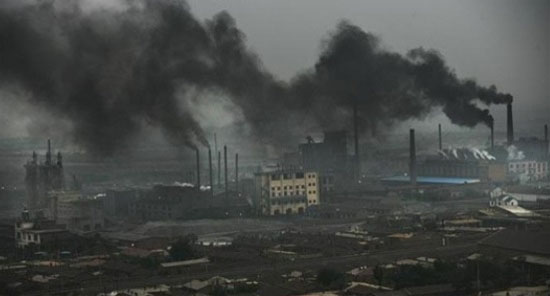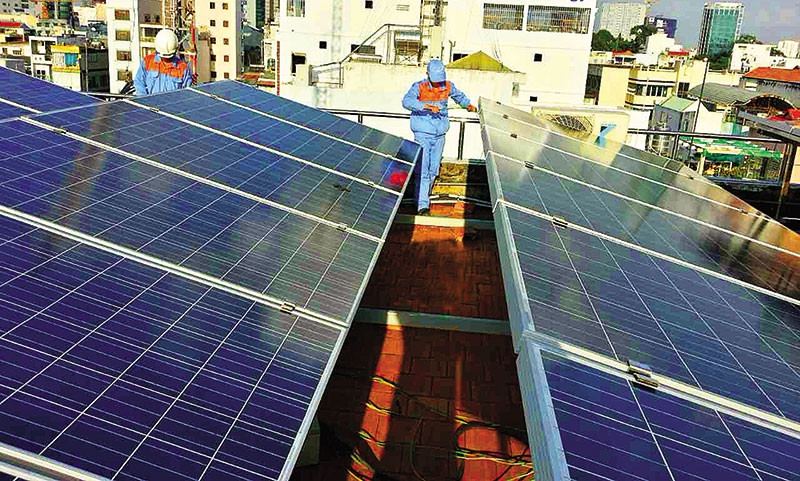
Chris Goodall is a climate change expert and a leading voice on new energy technologies. I spoke to the award-winning writer about what would shape the green energy debate in 2017 and beyond.

Nishtha Chugh: The global renewable energy sector reached a new momentum in 2016 with mega projects and investment in mass markets like India and China. Which new players or shifts in the industry do you expect to see in 2017?
Chris Goodall: India and China are by far are the biggest markets for electricity. We are continuing to see growth in solar in the US as well. But if we look down the list of countries by population and eventual electricity use, the new market with great potential for renewables growth would probably be Indonesia. Indonesia has been extremely slow. But the government has been expressing its commitment towards solar generation. Then there are places where there’s a very weak grid such as Kenya, Nigeria and some African countries, where things could move rapidly. I cannot predict exactly which country will switch to 100% or significant share of renewables in the energy mix next. But pretty much every month throughout 2016 there was some country offering that kind of commitment around the world, as it became more and more obvious that renewable energy was not only going to be cheaper it would also have better climate changing impact through lower pollution. More importantly, and particularly for China, lots of job creation is on the table as you move closer to renewables this year.
Chugh: Last year was also the hottest ever on record. Donald Trump’s election in America is seen as a setback to global efforts against climate change. It won’t be surprising if he withdrew from the Paris Agreement. Would that not have any cascading effect on the renewables market’s growth globally?
Goodall: Majority of the world operates on free market or near quasi free market principals. And at the moment solar is becoming cheaper and cheaper as a source of electricity. Depending on where you are it’s now the cheapest or one of the cheapest ways of generating power. If governments want to stall the development of solar they will have to actively legislate to do so. It’s no longer the question of how much the subsidy is in many parts of the world. And that is as true in the US as anywhere else. The election of the new president who appears to be very biased towards the maintenance of old energy economy based on coal, even he cannot do very much except simply outright banning things that would move economy towards renewables. The drive towards the improvement of energy efficiency, towards renewable energy, towards the electrification of transport etc. all over the world will continue. Trump's politics or his withdrawal from Paris Agreement cannot stop the growth of renewables at home or abroad. Even red states like Texas are recognising the advantages of the renewable energy. The government will have to do something politically unpopular to stall the growth of renewable energy. Even as we see these broad trends towards economic nativism, however loudly we reject them, you can’t in the end fight the fact that solar and wind will eventually become the best and cheapest ways of generating electricity all over the world.
Chugh: We still see a lot of resistance to building renewables projects. Part of the problem is coal, the cheapest fossil fuel at the moment in countries like Vietnam due to its vast reserves. After rejecting nuclear energy recently Vietnam is now reviving its coal sector because the country’s vast reserves make it cheaper to use coal to meet domestic demands than adopting renewables. How does one counter that?
Goodall: Vietnam in this context is a valid example. According to its energy plan the country is looking to produce about 10.7% of total electricity by 2030 from solar. It’s going to be a big expansion because virtually it’s got nothing at the moment. Coal and hydro-power would be the larger sources of capacity of course. However, my argument is that they will soon realise that solar is competitive and it’s going to grow even more. It’s becoming easier and easier for national administrations and private companies to invest in solar, and looking at the maps you can see that southern Vietnam has a strong solar potential. The share will be relatively a small fraction of total electricity supply but it is going to grow fast. They won’t need to subsidise by anything like the amount that has been suggested in the plan. Presumably it is to pull in the international money, but what they will find is that the international money which is circling the world looking for opportunities like these will find Vietnam highly attractive for its growth potential. This is exactly the place where they (investors) are going to be and they would want to put solar on the ground. I don’t think there will be any problem raising money for that as the time goes on. And like Vietnam other rapidly industrialising economies with vast coal reserves too will find that in the long run coal isn’t the cheapest way to generate electricity. You add that much coal capacity to a large and reasonably densely populated country and you are going to get a lot of air pollution and other serious concerns. That’s an enormously high hidden cost to using coal.
Chugh: Despite advances in green technology and solar energy becoming immensely cheap the outlook for renewables growth in the next decade doesn’t look promising. IRENA’s latest prediction suggests renewables’ share in the global energy mix will rise by less than 3% by 2030. Why are the numbers so dismal?
Goodall: It does look dismal, yes, I agree. IRENA’s latest review predicts the current share of 18.3% will rise to 21% by 2030. That’s what they say will happen if countries just meet their commitments under Paris Agreement. The review emphasises that it is possible to reach 36% by that time frame but for that we need at least $770 billion in global investments and a big momentum towards that goal. Background to this is that international agencies are terrified of cheerleading for a transition that they are not absolutely certain is going to happen.
Chugh: And why is that?
Goodall: I think we humans are terrified of departing too much from the conventional view. And we sort of believe that although things, say in the case of solar pv have gotten better and better over time, we think it can’t possibly go on like this. There’s an inbuilt scepticism about the predictability of future amongst us. When the report came out last year I looked at some of the projections made in the past by major government institutions here (Britain), in the US and elsewhere in the world, including International Energy Agency, about the growth of renewables over time. Every single year repeatedly, time after time, every one of these bodies without exception underestimated the growth of solar to come in the next few years. What we have seen for 60 years as that as solar is produced and stored its price comes down, which creates a virtual circle whereby people see solar has come down in price and they become more interest in installing it. And the circle goes on. But in special energy agencies like IRENA they are saying, well, we are not certain this is going to continue, however, it can continue if people get their acts together. Everyone knows that’s not enough. Things need to move faster to get to 36% by 2030 than governments are currently saying their policies will indicate. And to sustain the momentum you need $770billion, that’s roughly double of what’s being spent at the moment per year on renewable energies.
Chris Goodall is the author of Ten Technologies To Fix Energy and Climate. His latest book The Switch released in July 2016.
Source: Forbes





.png)


